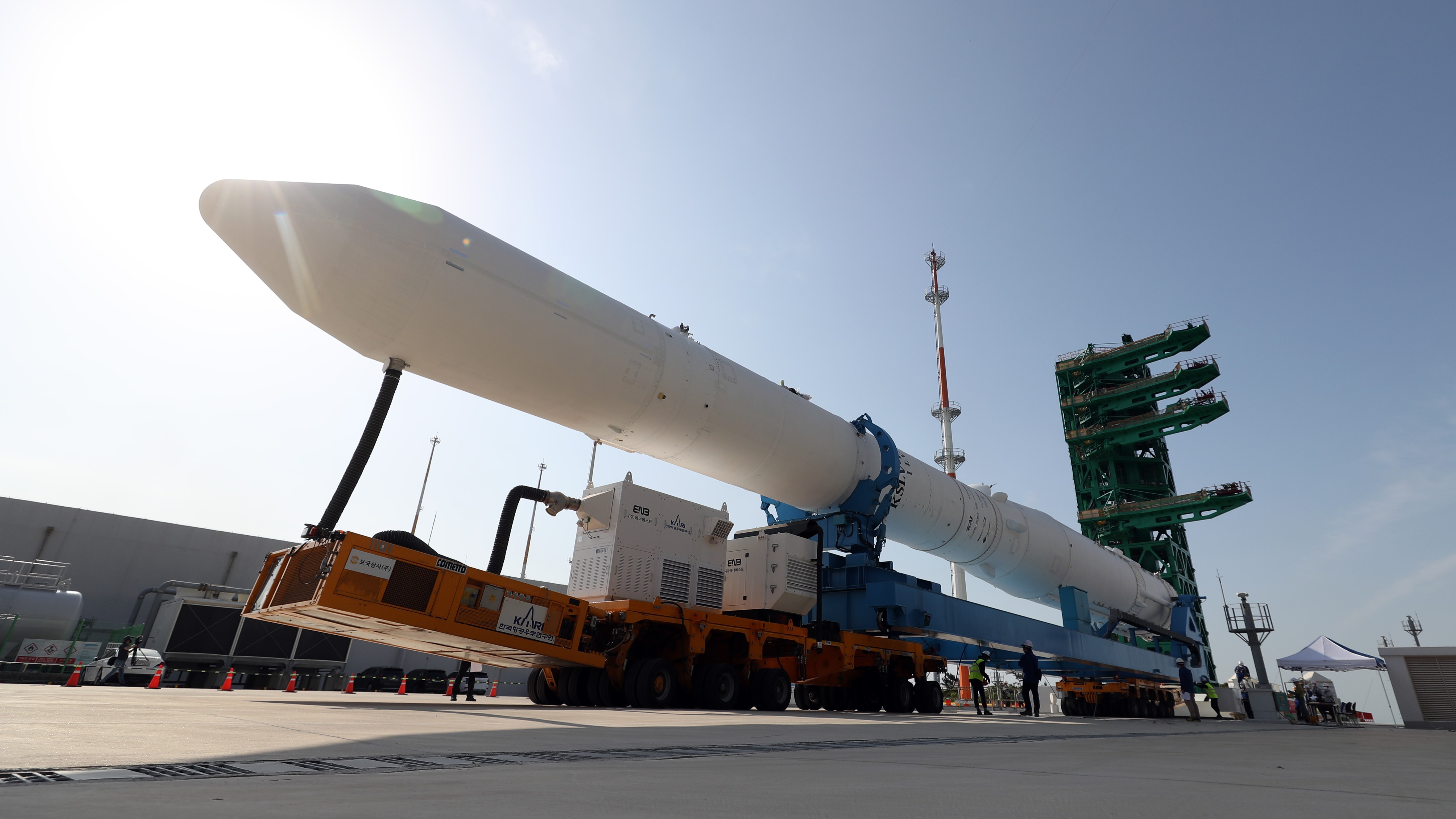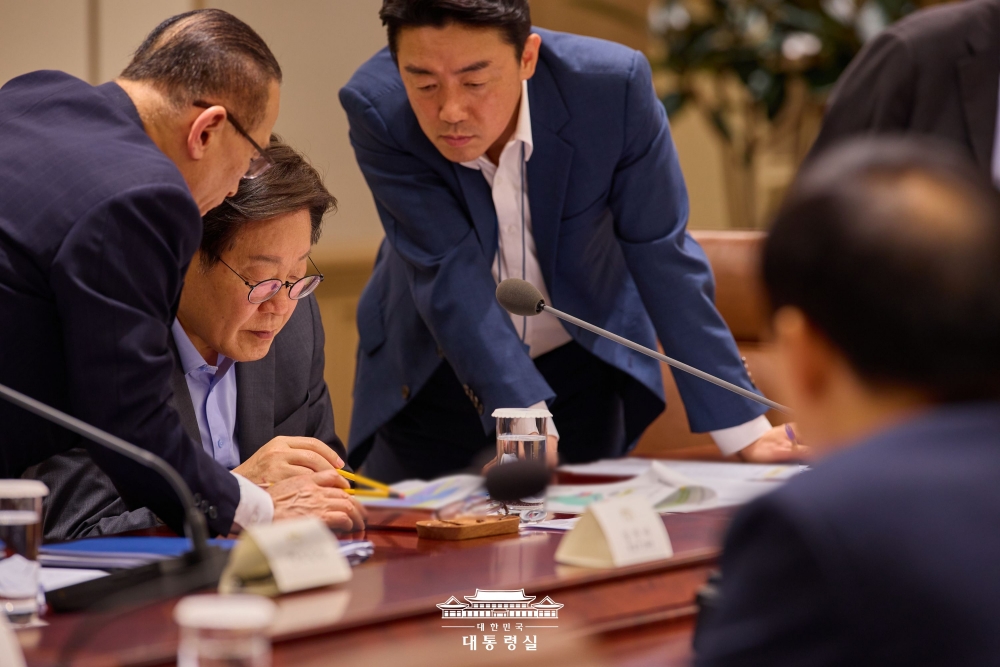
The fully assembled qualification model of the space rocket Nuri on June 1 is moved to its launch pad at the Naro Space Center in Goheung-gun County, Jeollanam-do Province. (Yonhap News)
By Joung Haseung
The fully assembled qualification model of Korea's first domestically developed space rocket Nuri on June 1 was unveiled for the first time at the Naro Space Center in Goheung-gun County, Jeollanam-do Province.
Measuring 47.2 m long and weighing 200 tons, Nuri, whose development began in 2010, is the nation's first rocket made exclusively with domestic technology. The three-stage projectile can transport a 1.5-ton satellite into a low orbit of 600-800 km above Earth.
Its 75-ton liquid engine, a core component of Nuri's development, is based on the 30-ton liquid engine technology of Korea's first space rocket Naro.
The qualification model shown on June 1 is an exact replica of the flight model slated for launch in October.
The Ministry of Science and ICT and the Korea Aerospace Research Institute also announced a planned certification test for Nuri's new second launch pad built specifically for the rocket.
The second pad set for use in October differs from Naro's launch pad as it includes Umbilical Tower, a vertical structure 48 m tall that supplies propellants and allows takeoff preparations while the rocket is standing.
The tower is an above-ground structure that feeds fuel and propellants to the rocket, and was named after the umbilical cord, which provides nutrients from a mother to her fetus.
The tower, equipment for fuel supply and the rocket's erection, and all other facilities needed for the launch were made entirely with domestic technology.
On June 1, Nuri was transported over a distance of 1.8 km for approximately one hour from its assembly building at the space center to its launch pad and was erected. The ministry said the rocket will undergo various tests for a month.
The first and second stages of the rocket's flight model (FM1) are under construction, while the third has been assembled and is in storage. Once the first two stages are built, all three parts will be connected to complete the flight model.
If Nuri's launch in October is successful, Korea will become just the seventh country to possess its own space projectile technology.
jhaseung@korea.kr
Most popular
- Grammy-winning producer calls Suga of BTS 'amazing artist'
- 'Universal love, family' themes fuel success of 'King of Kings': director
- New York Times picks 'Parasite' as top movie of 21st century
- BTS to release new album, begin world tour in spring 2026
- Exhibition showcases 100 years of country's modern art
